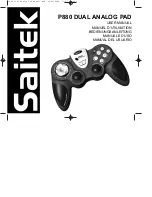
You can specify a pulse width. The pulse width is also measured in terms of a number of
active edges of the Source input. You also can specify the active edge of the Source input
(rising or falling).
The following figure shows a generation of a pulse with a pulse delay of four and a pulse
width of three (using the rising edge of Source).
Figure 74. Single Pulse Generation
SOURCE
OUT
Counter Armed
Single Pulse Generation with Start Trigger
The counter can output a single pulse in response to one pulse on a hardware Start Trigger
signal. The pulse appears on the Counter n Internal Output signal of the counter.
You can specify a delay from the Start Trigger to the beginning of the pulse. You also can
specify the pulse width. The delay is measured in terms of a number of active edges of the
Source input.
You can specify a pulse width. The pulse width is also measured in terms of a number of
active edges of the Source input. You can also specify the active edge of the Source input
(rising and falling).
The following figure shows a generation of a pulse with a pulse delay of four and a pulse
width of three (using the rising edge of Source).
Figure 75. Single Pulse Generation with Start Trigger
SOURCE
GATE
(Start Trigger)
OUT
Pulse Train Generation
Refer to the following sections for more information about the cRIO controller pulse train
generation options:
•
•
Retriggerable Pulse or Pulse Train Generation
•
Continuous Pulse Train Generation
•
Buffered Pulse Train Generation
98
|
ni.com
|
cRIO-904x User Manual













































